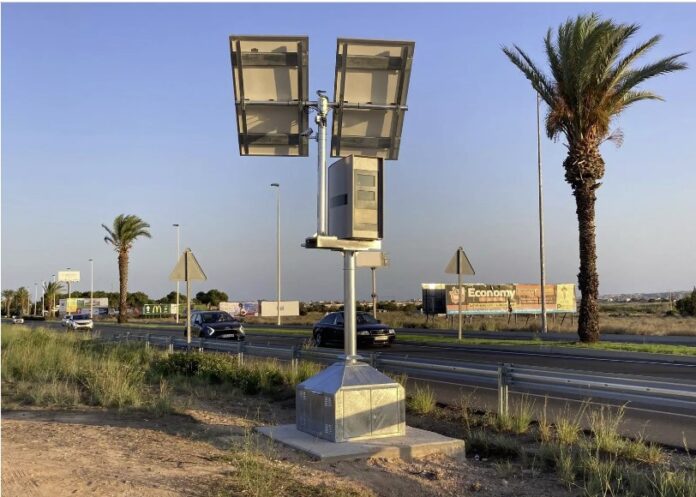The peed camera installed by the General Directorate of Traffic a few weeks ago on the CV-905 in Torrevieja is not yet operational. It will not be so until well into September, according to sources from the DGT.
It is a “camera” with a robotic appearance, not at all similar to the grey rectangular cabinets e often see at ground level, hidden among guardrails and shrubbery, with which drivers are “caught” for speeding on other stretches of roads in the Vega Baja.
The new camera is located at kilometre 7 (7+050) of the CV-905 road with two lanes in each direction of travel, which, along with the N-332, is the main access to Torrevieja, with an average passage of 30,000 vehicles per day, in the section between the La Siesta and San Luis urbanisations.
Either side of this installation are warning signs located on both sides of the road at kilometre points 6.550 and 7.670.
These sophisticated cameras, of which many others have been installed in the province, are expected to be certified in the first half of September and to come into operation at the end of that month.
The cost of each radar of this type is 45,000 euros – with an annual maintenance cost of another 6,500 – according to public information. More than 60 of these devices are being sited with an investment of 14 million euros.
According to the study carried out by the DGT’s Mobility Sub-directorate at a national level to detect stretches with a high accident rate caused by speeding, between kilometre points 6.5 and 8.5 of this CV-905 there has been a high accident rate in the last five years: 47 accidents resulting in 3 serious injuries and 26 minor injuries.
The 50 kilometre per hour limit along almost ten kilometres between the Torrevieja exit and the Los Montesinos roundabout was implemented in 2018 in order to improve road safety in a stretch full of roundabouts at the access to urbanisations and pedestrian crossings.





